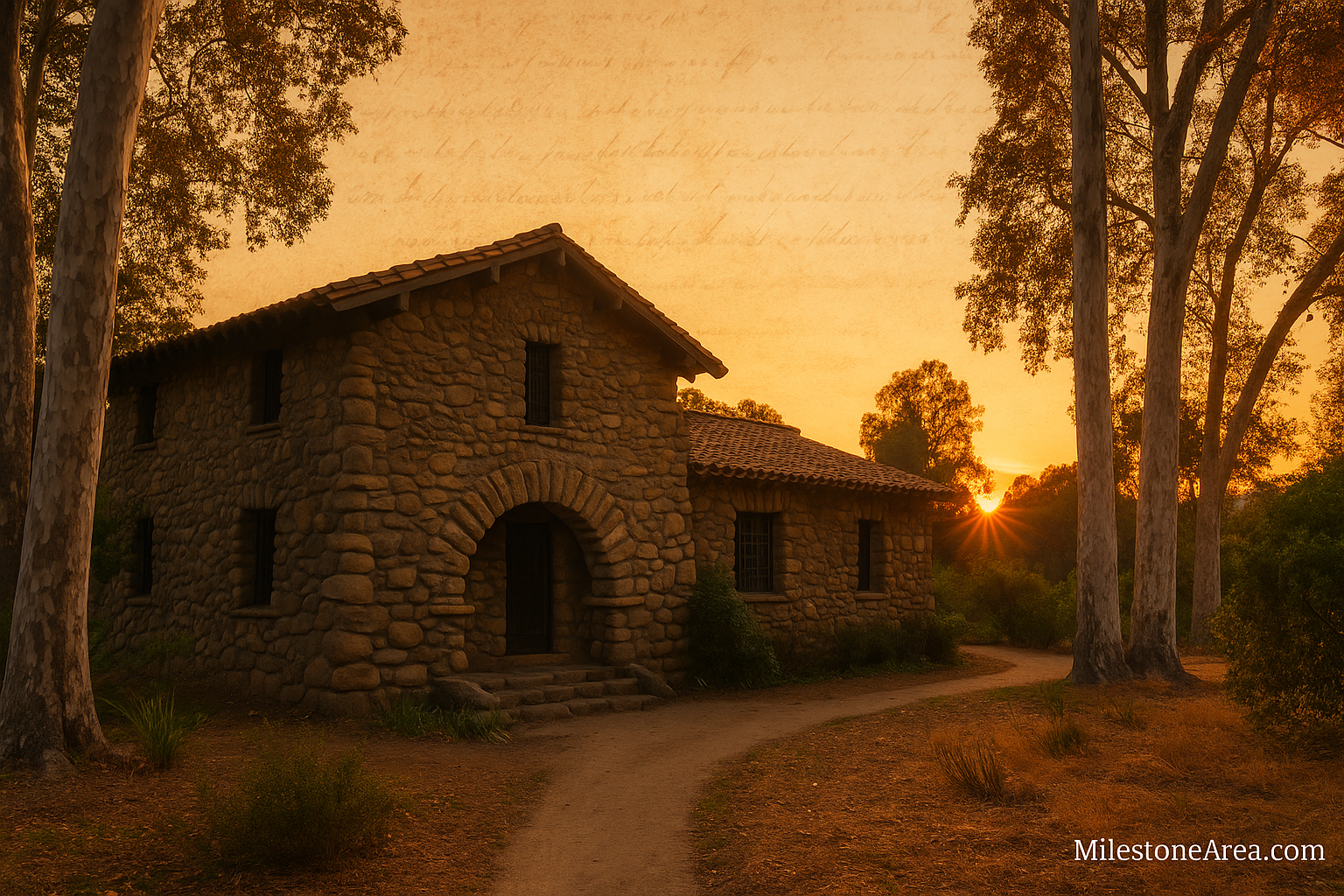In the quiet area of Arroyo Seco in Los Angeles stands a home that breaks away from modern design. It does not chase trends. It tells a deeper story. The Lummis Home, known as El Alisal, holds the legacy of one bold man who shaped it stone by stone.
Charles Fletcher Lummis built this house with his own hands in the late 1800s. He picked river rocks from nearby and gathered local wood. He placed each stone with care. The home reflects his vision, spirit, and deep love for art, the desert, and California’s roots.
Most people walk past the house without knowing its story. They see a strong wall, not a monument to creativity. But inside those walls, poets, artists, and thinkers once shared ideas. Lummis gave them space to speak, to create, and to challenge the world.
Today, the home stands as a quiet reminder of history. It keeps the beauty of the past alive. It draws visitors, artists, and dreamers. It speaks through silence and stone.
Charles Lummis: The Man Who Chose a Rough Path
Charles Lummis wanted more than comfort. He walked from Ohio to California to make a point. He told his journey through stories. He saw beauty in the desert. He respected those who lived close to the land.
He worked as a writer, editor, and historian. His words shaped how people saw the American Southwest. He supported Native culture. He spoke up when others stayed silent. He fought for fair libraries and honest schools.
He stood out from the crowd. His style and voice caught attention. But his actions gave him power. He built his home with grit. Each part of it told a story. That story still speaks to those who listen.
His house became more than a home. It became a symbol. It showed that one person can protect history and share culture with the world.
El Alisal: A Home with Heart and Handwork
Lummis wanted peace and nature around him. He picked a spot near the Arroyo Seco. He called it “El Alisal,” which means “place of sycamores.” He built the house himself. No machines. Just tools, time, and a clear goal.
He used stones from the riverbed and carved beams from local trees. The house mixed Spanish, Native, and California design. It looked like no other place in Los Angeles. It reflected the land and his vision.
Inside, thick walls kept the house cool. Heavy doors stood tall. Carved shelves lined the rooms. Fireplaces warmed every space. Each room held memories. Guests came to eat, share ideas, and leave with stories. The home gave them more than food. It gave them space to dream.
A Home That Welcomed the World
El Alisal became more than a private space. It turned into a hub of ideas. Artists, writers, musicians, and leaders stepped through its doors. They found something rare: a place to speak without fear.
Lummis hosted Sunday dinners that became famous. He called them “Noises.” People ate, sang, laughed, and shared their work. Some wrote poems. Some told jokes. Some argued about ideas. But all felt welcome.
The home became a bridge. It joined cultures, voices, and generations. It showed that beauty could grow from respect and bold thought. Lummis made his home into a space where ideas could breathe.
A Fight to Save the Past
Lummis did not stop at building or hosting. He worked to protect California’s old churches, missions, and Native stories. He wrote letters. He gave speeches. He helped start groups that cared about history.
He used El Alisal as his office and meeting space. He made plans there. He met people who wanted to help. He believed action kept memory alive. His home gave him the ground to fight for the past.
Los Angeles saw the value in his work. The city named the house a historic landmark. That gave it protection. Today, tourists walk through the halls. They hear echoes of voices that once filled the space.
What Visitors See Today
A trip to the Lummis Home offers more than a look at stone walls. You step into a place where history still speaks. Rooms stay filled with the books, tools, and art that belonged to Lummis. You see how he lived, worked, and welcomed others.
The library still holds the books he read. The living room shows his taste in design. The dining area reminds you of the meals shared with guests. Every room holds a piece of time.
Outside, the garden still grows. Birds fly between trees. Trails guide you through calm spaces. The land feels untouched. It feels right.
Guided tours help explain the history. You learn about the guests who visited. You hear how Lummis fought to keep the old world alive. Each part of the visit gives you more than facts. It gives you a feeling.
Why Lummis Still Matters
The name Lummis may not be as famous as others, but his impact runs deep. Schools use his story to teach real history. Artists find new ideas in the old stone walls. Writers draw strength from his bold path.
His voice lives on in books, essays, and the home he built. People still quote his words. They still follow his lead. His legacy remains because he gave it form. El Alisal stands strong. So do his ideas.
Local groups work to protect the home. Volunteers help with events and upkeep. The house still hosts readings and talks. It still holds music nights. It still invites people in. That is what Lummis always wanted.
A House That Refuses to Fade
In a world that moves too fast, the Lummis Home tells us to pause. It reminds us that history holds value. It shows that beauty can come from hard work and honest vision.
El Alisal stands in the middle of a changing city. But it does not move. It keeps its roots deep. Its stones carry the weight of memory. Its walls protect more than space. They protect dreams.
Lummis built more than a house. He built a message. That message still speaks. It tells us to care. It tells us to create. It tells us to never forget.
If you enjoy places that spark creativity, see how Milestonearea.com inspires better home renovation ideas in ways that blend vision with lasting design.
FAQs
How old is the Lummis Home?
Construction began in 1895. The house has stood for more than a century.
What does “El Alisal” mean?
It means “place of the sycamores” in Spanish. Lummis named it after the trees nearby.
Did Lummis live there alone?
He shared the home with family, friends, and visitors. Many artists and writers stayed as guests.
Are events still held there?
Small events, readings, and talks still take place. The home remains active in cultural life.
Is the garden original?
Much of it follows the same layout. Trees planted during Lummis’s time still grow on the grounds.
Does the home belong to the city now?
The City of Los Angeles owns and protects the site. It stands as a public landmark.
Final Words
Charles Lummis gave more than time to this house. He gave it his strength, his spirit, and his soul. He did not just build with stones. He built with purpose. Each wall reflects his love for truth, beauty, and history.
The Lummis Home stands as a message to the world. It shows that one person can shape culture. It proves that ideas can live in wood, rock, and quiet rooms. This house does not fade. It holds its place. It stands with grace and power.
When you step inside, you feel more than air and stone. You feel a deep call to care about something. You feel the past pressing gently on the present. You see what it means to fight for memory, even when few others do.
This home does not ask you to rush. It asks you to pause. It reminds you that history needs guardians. Dreams need space to grow. The world needs more voices like Lummis-bold, creative, and true.
El Alisal waits with open doors. Its voice still speaks in silence. Its secrets live in every shadow. The legacy of Charles Lummis is not gone. It lives in every visitor who listens, learns, and carries that story forward




